Seaweeds of the South African South Coast


Order Ceramiales
Family Ceramiaceae
Antithamnion diminuatum Wollaston 1968: 293 (incl. var. diminuatum and var. polyglandulum Stegenga 1986: 30)
Plants to a few cm long, partly repent and attached by rhizoids or haptera that develop from the whorl branchlets, the apices usually free from the substratum for some length. Cells of the main axis with two branchlets, decussate. Branchlets with a short basal segment without regular branching, but at a later stage this cell may develop up to three multicellular attachment filaments. Other segments may develop two opposite ramuli (lower segments) or alternating ramuli (upper segments) – the top (ca. 2-5 segments) remaining unbranched. Re-branching of the ramuli rare, except for the formation of more or less abundant (three- or four-celled) branchlets with a gland cell. Gland cells lens-shaped to almost round, ca. 12-35 µm in diameter. Branchlets up to 400 µm or 900 µm (“var. polyglandulum”) long. Main axis up to 75 µm (125 µm in var. polyglandulum) in diameter, the segments up to ca. 3 times al long.
Tetrasporangia borne on the basal cells of the ramuli of the pinnae, ovate, to 75x50 µm, cruciately divided. Spermatangial stands (rare) on the lower (but not the basal) segments of determinate branches, replacing ramuli, with a straight ca. six-celled axis bearing spermatangium mother cells. Carposporophytes (rare) with one hemispherical gonimolobe developed, another much smaller, to ca. 300 µm in diameter, the carpospores within a gonimolobe ripening simultaneously and measuring ca. 45 µm in largest diameter.
In the past this species was split into the typical variety and var. polyglandulum, with A. eliseae Norris as a third entity distinguished from Natal collections. Var. polyglandulum usually does not bear reproductive structures. This species often has strongly swollen gland cells, the cause or function of which is unknown.
Collections, ecology and regional distribution
Recorded from the Cape Peninsula on the west coast , along the whole south coast and into northern KwaZulu-Natal (17-57). A common constituent of algal vegetation at or below low tide level, often epiphytic on larger algae.
World distribution: also recorded from Namibia, southern Australia and some Atlantic Islands.
Type locality: Kangaroo Island, South Australia (Silva et al. 1996).
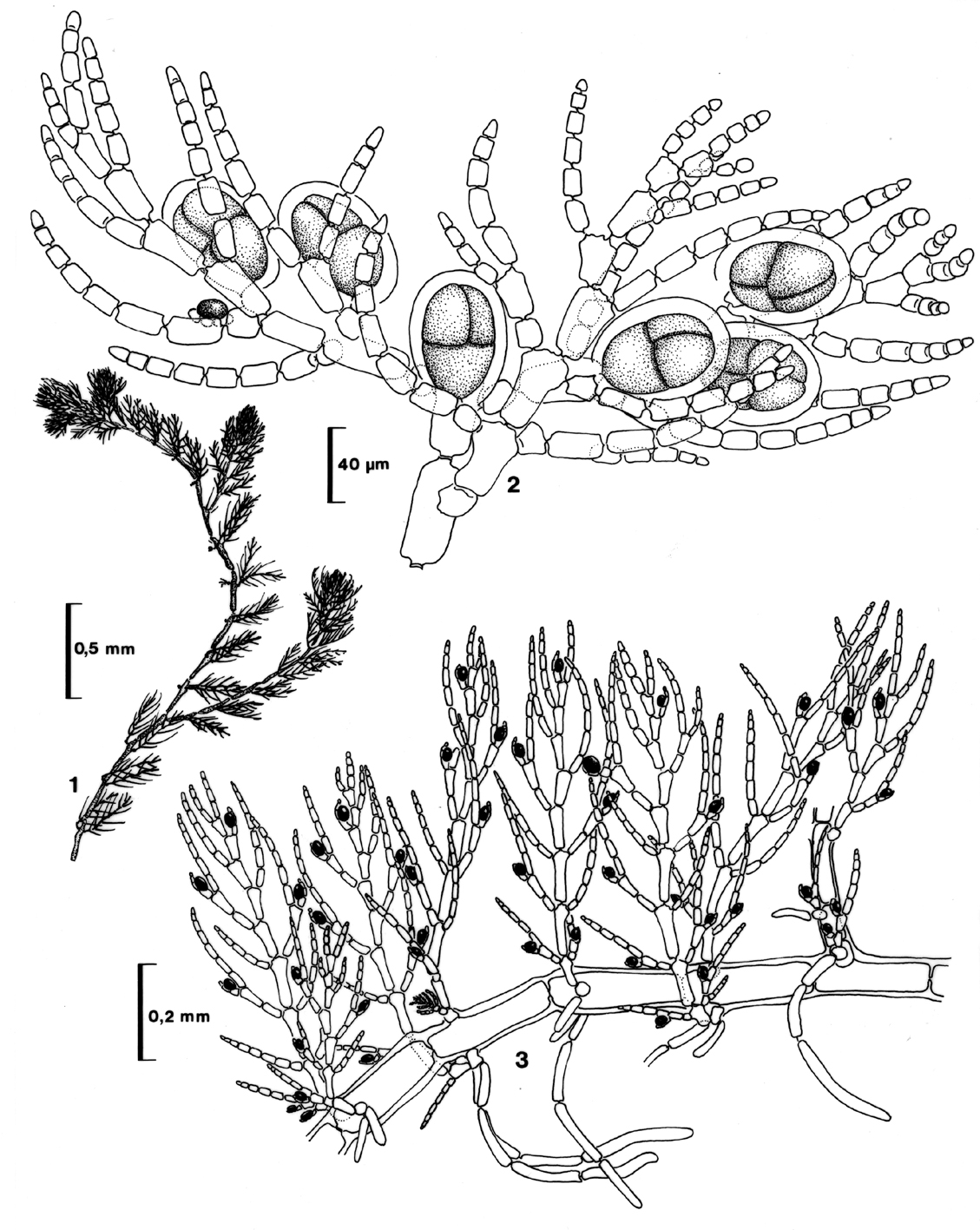
Antithamnion diminuatum. 1. Habit. 2. Tetrasporangia. 3. Detail of prostrate axis and pinnate branchlets, with numerous gland cells. Reproduced from Stegenga et al. (1997: fig 3 as var. polyglandulum, now subsumed into A. diminuatum).
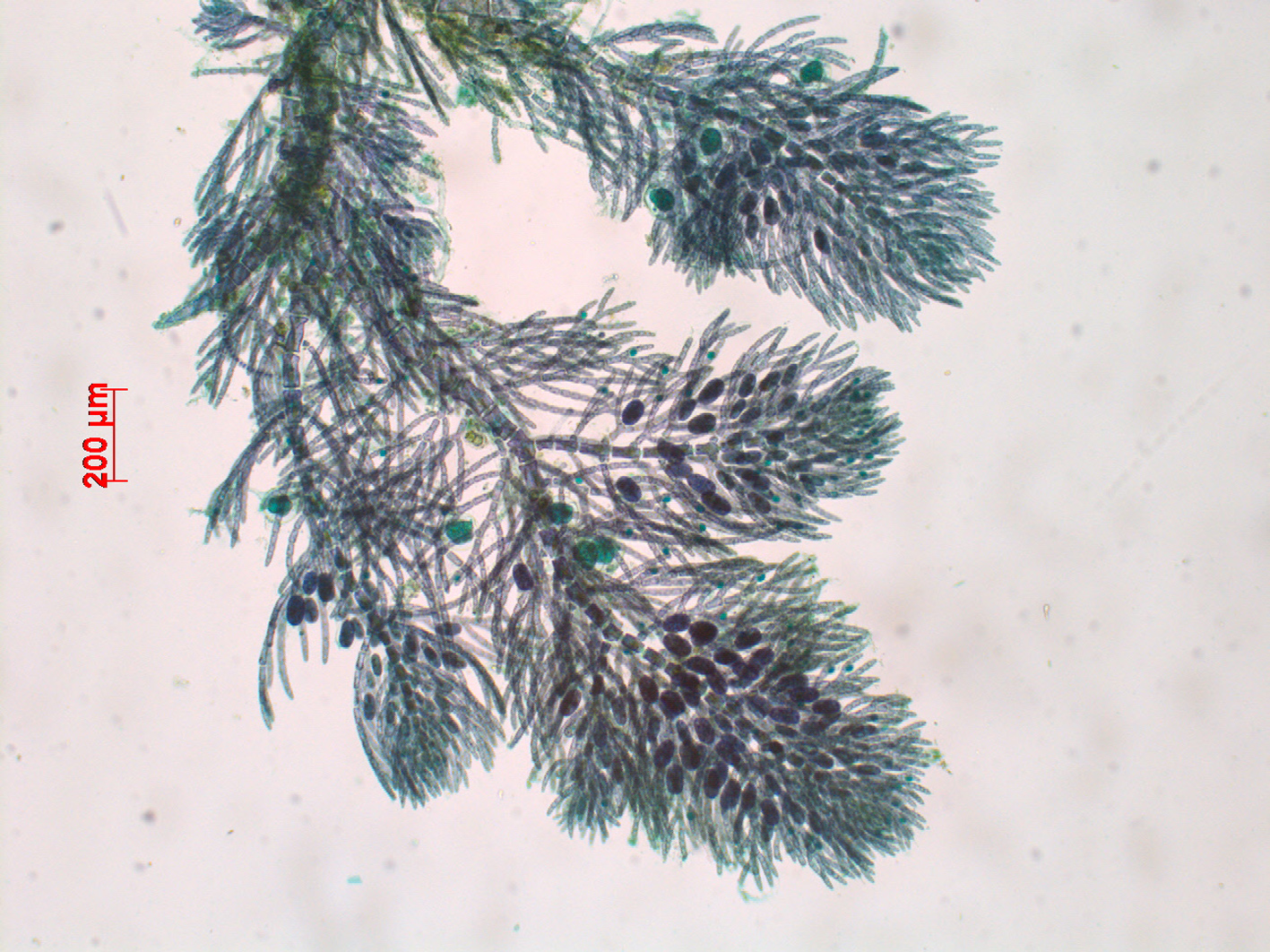
Antithamnion diminuatum. Tetrasporangial plant, stained slide material.
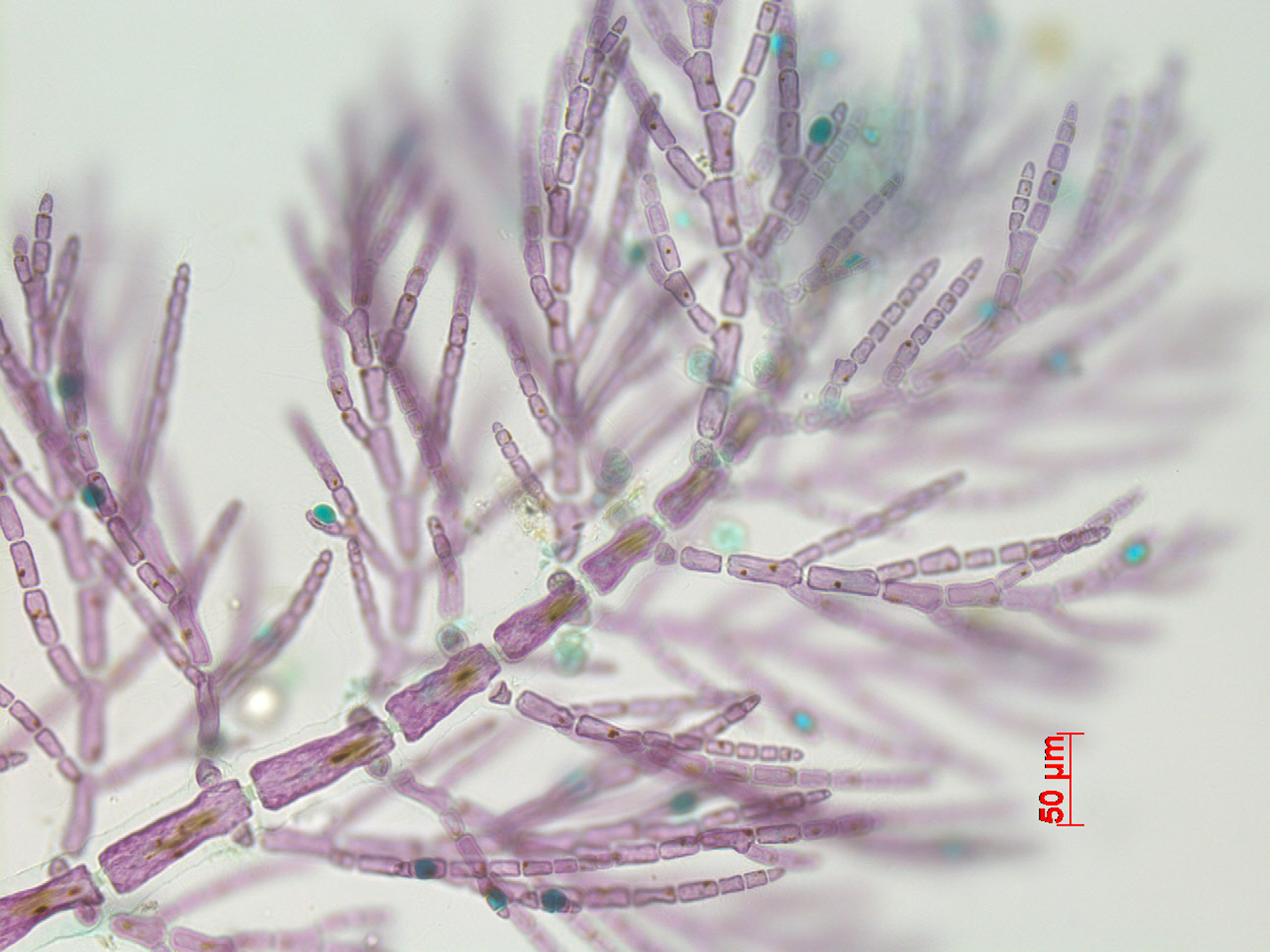
Antithamnion diminuatum. Vegetative material: slide material, gland cells stained green.
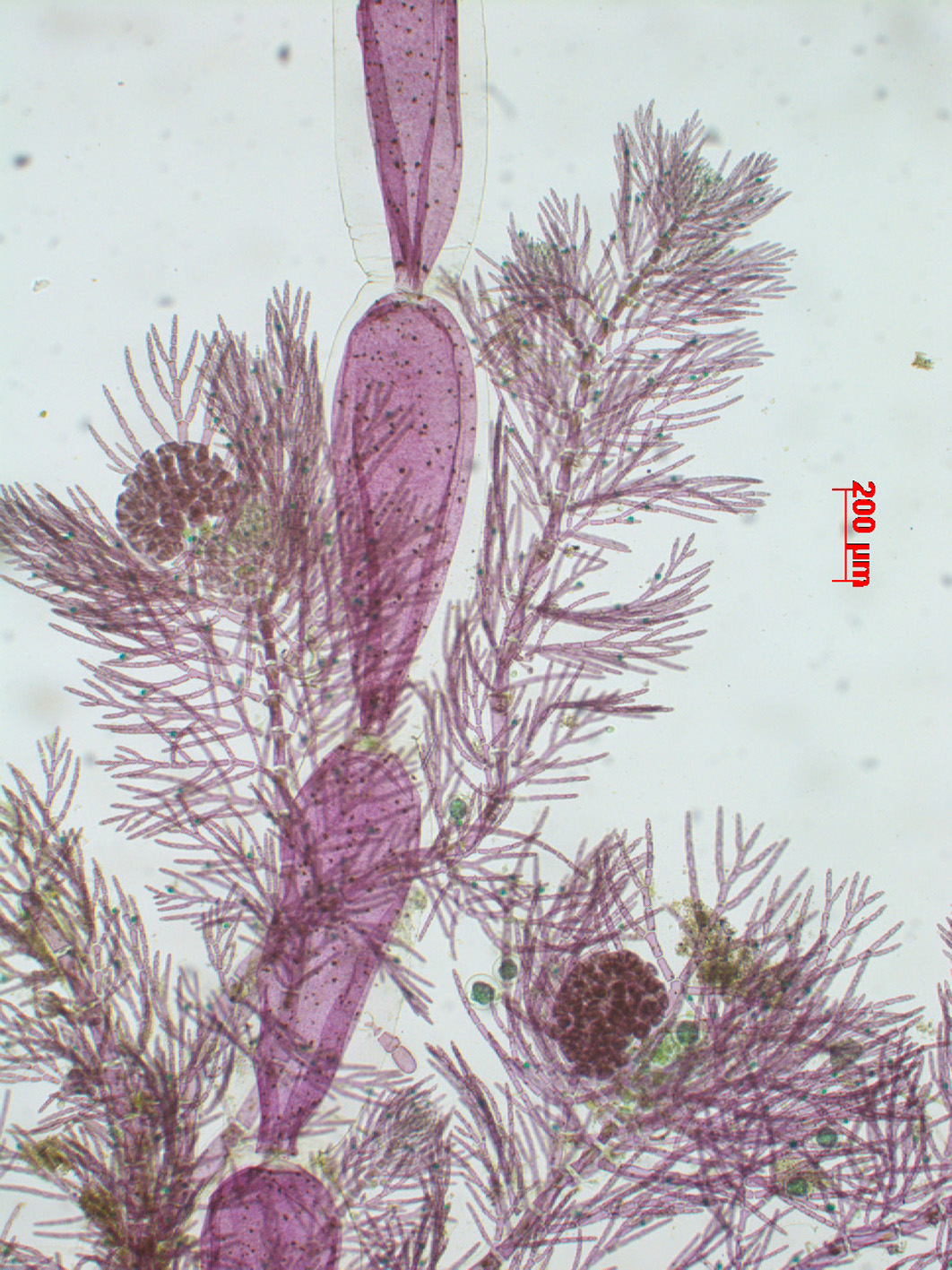
Antithamnion diminuatum. Carposporophytes. Note: The large cells in the centre are part of a Griffithsia thallus.
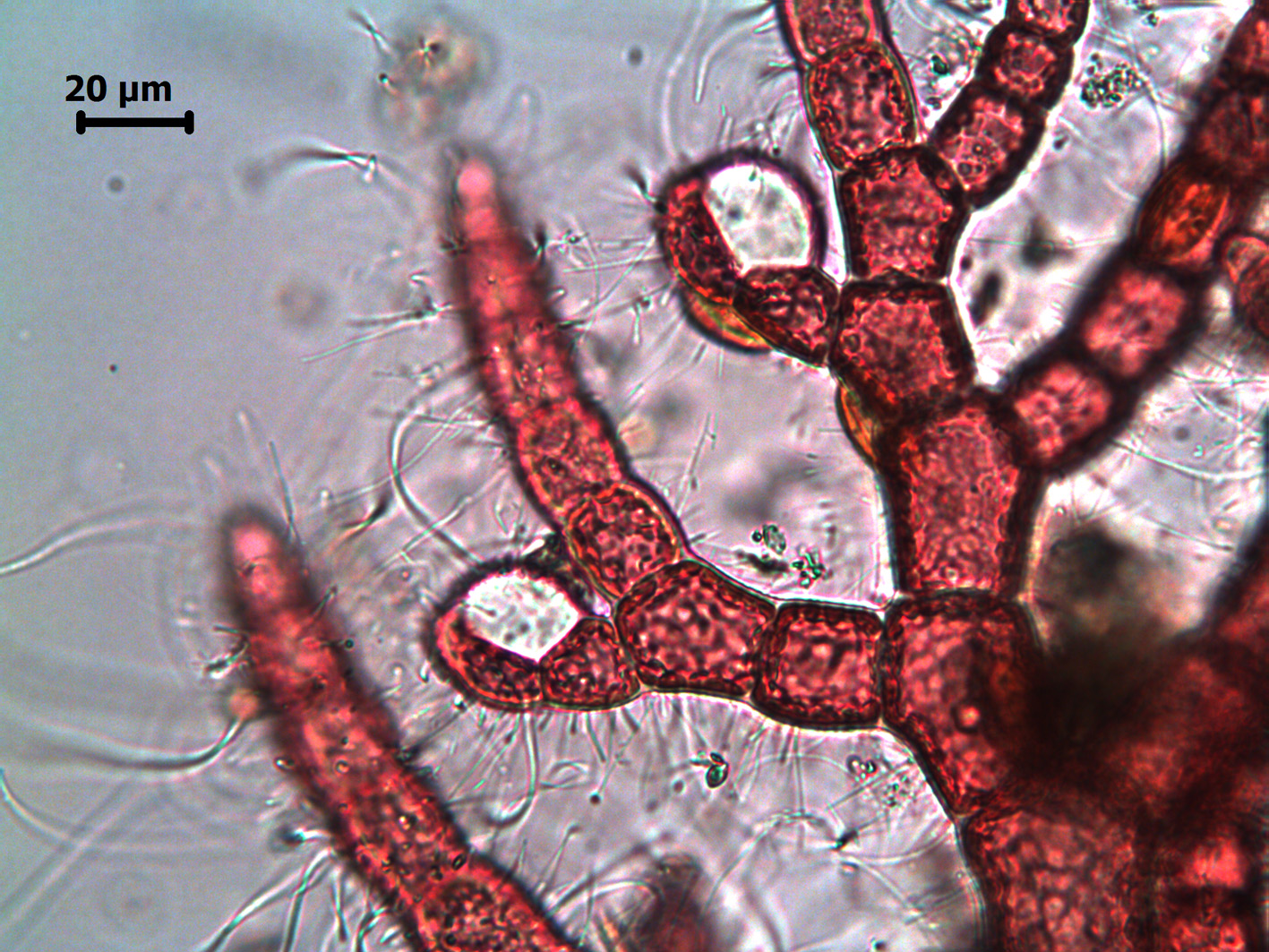
Antithamnion diminuatum. Fresh material – note transparent gland cells.
References Antithamnion diminuatum
Silva, P.C., Basson, P.W. & Moe, R.L. 1996. Catalogue of the benthic marine algae of the Indian Ocean. University of California Publications in Botany 79: 1-1259.
Stegenga, H. 1986. The Ceramiaceae (excl. Ceramium) (Rhodophyta) of the South West Cape Province, South Africa. Bibliotheca Phycologica 74: 149 pp.
Stegenga, H., Bolton, J.J. & R. J. Anderson. 1997. Seaweeds of the South African west coast. Contributions from the Bolus Herbarium 18: 655 pp.
Wollaston, E.M. 1968. Morphology and taxonomy of Southern Australian genera of Crouanieae Schmitz (Ceramiaceae, Rhodophyta). Australian Journal of Botany 16: 217-417, 42 figs, 1 table, 10 plates.
Cite this record as:
Anderson RJ, Stegenga H, Bolton JJ. 2016. Seaweeds of the South African South Coast.
World Wide Web electronic publication, University of Cape Town, http://southafrseaweeds.uct.ac.za; Accessed on 07 December 2025.